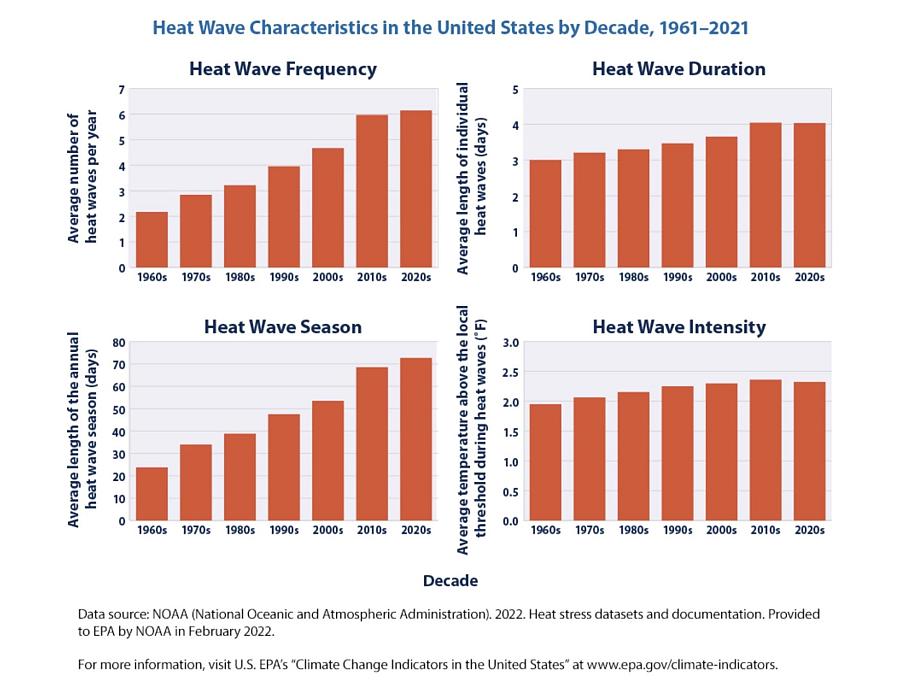The Heat Beat: Scientists say it's time to prepare for extreme heat on the Central Coast
The story was originally published in KCBX with support from our 2024 California Health Equity Impact Fund.

Extreme heat days are projected to increase on the Central Coast. When temperatures are unusually high for long periods of time, it can become dangerous for people's health. Counties are assessing their vulnerabilities as the first step in planning for extreme heat.
Mark Bright / CountyofSB
Extreme heat is considered one of the deadliest climate-related hazards. When temperatures soar and stay high for multiple days, it takes a toll on people’s health.
And even though the Central Coast is known for its moderate climate, projections for the region show an increase in frequency and severity of heat waves in the coming decades.
“The projections for the Central Coast suggest that there could be about five times as many days of extreme heat by the end of the century,” said Kristen Guirguis, a project scientist with Scripps Institute in San Diego, California.
She said extreme heat is measured by changes in average daily temperatures — and that number varies by location.
“If you live someplace that’s near the coast where you have really mild conditions and it generally doesn’t get very hot, then your extreme is going to be not the same as somebody living in the inland, kind of deserts part of California,” Guirguis said.
On the Central Coast, there are vastly different temperatures depending on proximity to the ocean. For example, Paso Robles and Cuyama are regularly hotter than Pismo Beach and Santa Barbara.
Guirguis said, wherever you live, if temperatures are higher than usual for extended periods of time, there’s more risk for health complications like dehydration, heat exhaustion, and heat stroke.

This graph shows the frequency and intensity of heat waves in the United States. Heat is becoming more of a climate risk on the Central Coast and the region is projected to have an increase in extreme heat days in the coming decades.
EPA.Gov
Guirguis points to 2006 as a wakeup call for scientists in California. That’s when a devastating heat wave hit the west coast.
“There were hundreds of deaths attributed to that heat wave,” she said.
After that event, Guirguis said it became more urgent to study and understand the health impacts of heat.
But it’s only now — many heat waves later — that the state is taking steps to prepare.
In 2022, the governor’s office published a report called "Protecting Californians from Extreme Heat." It’s an action plan for building more resilient communities.
The report identifies outdoor workers, the elderly, young children, low-income residents, and those who are pregnant or have chronic illness as most vulnerable to extreme heat. It cites isolation and a lack of air conditioning as significant risk factors.
With the state’s call for action, counties across California are now assessing their climate vulnerabilities.
Elizabeth Merson is with the County of San Luis Obispo Public Health Department. She is the division manager for planning, evaluation, and policy.
“Extreme heat is one of the top hazards that has been identified in the preliminary findings,” she said.
Merson said SLO county aims to take advantage of grant money available from the state to increase resilience, and they are exploring ways to do that.
“We just started meeting with our colleagues, specifically in Santa Barbara, Ventura, and Monterey, to discuss climate. So, looking at it on a Central Coast region level and seeing what sort of regional approach we can have,” she said.
SLO county will release more information about their plans in June.

A social media post issued by the National Weather Service in September 2020. Paso Robles is in northern San Luis Obispo County.
NWS
Given that the Central Coast has experienced summer heat waves several years in a row, it’s important for counties to have plans in place, especially for vulnerable populations.
Kristen Guirguis, the climate scientist, said planning ahead can minimize the health impacts of extreme heat events.
“It’s very important to start preparing now — to think about what we can do today to make these risks less in the future, because these kinds of preparations — they can save lives,” she said.
Our series, "The Heat Beat," will include conversations with health professionals, local officials, and non-profit organizations as heat-related projects get underway on the Central Coast. Next week we’ll hear from local medical experts about how heat affects our health.


